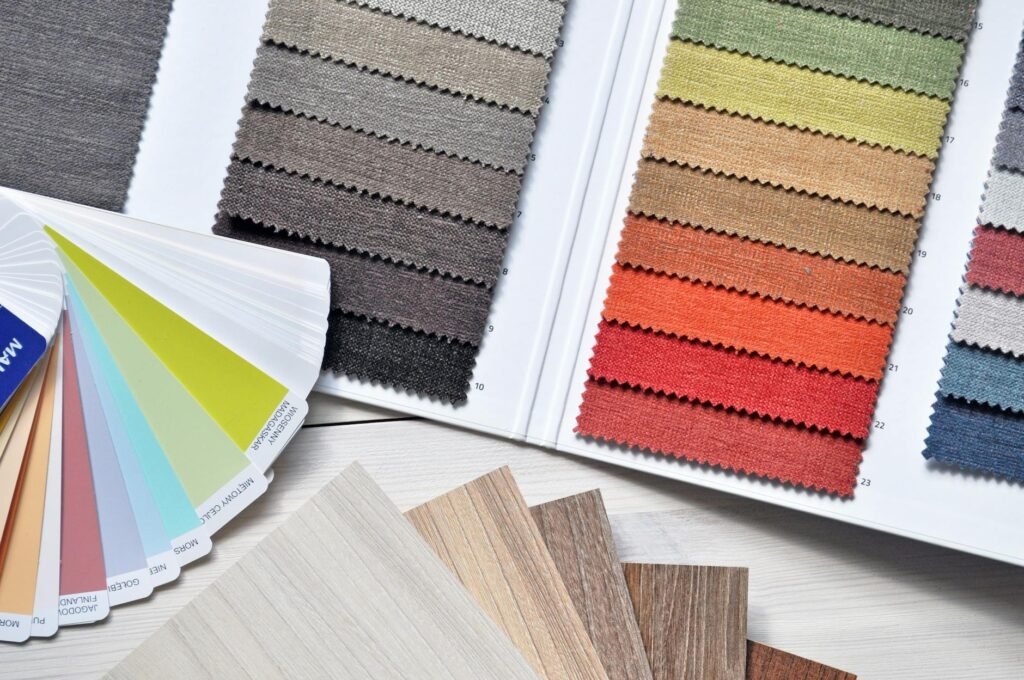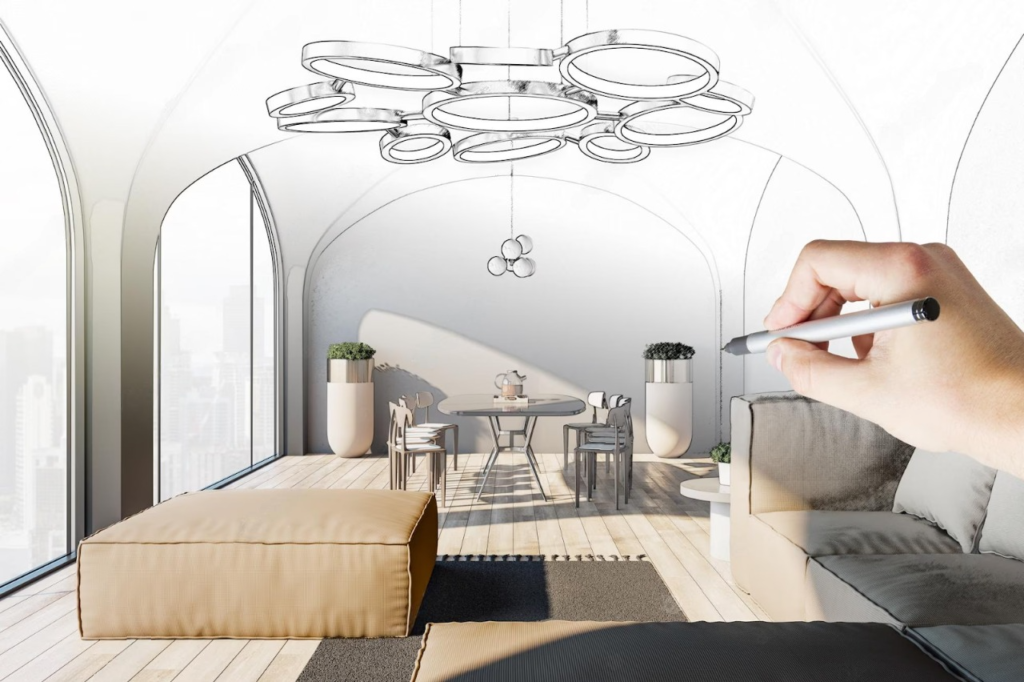Creating Harmony in Your Space: Choosing the Right Furniture with Dekolux
Introduction to Harmony in Interior Design
Harmony in interior design is an essential element that contributes significantly to the overall ambiance of a space. It involves the careful selection and arrangement of various design elements, ensuring they work together cohesively to create a balanced and inviting environment. Achieving harmony means that all aspects of the room, from furniture and colors to textures and styles, complement each other seamlessly. This balance not only enhances the aesthetic appeal but also makes the space more comfortable and functional.
One of the primary challenges people face when trying to achieve harmony in their space is choosing the right furniture. The selection process can be daunting, as it requires a keen eye for design and an understanding of how different pieces will interact within the room. Additionally, selecting the appropriate colors and styles that align with the overall theme of the space can be equally challenging. A mismatch in these elements can disrupt the harmony and lead to a disjointed and unattractive environment.
Another common obstacle is ensuring that the chosen furniture fits well within the spatial constraints of the room. Overcrowding a space with too many pieces can make it feel cluttered and overwhelming, while too few items can result in a sparse and uninviting atmosphere. Finding the right balance is key to creating a harmonious setting that is both visually appealing and practical.
Moreover, personal preferences and trends can sometimes conflict, making it difficult to achieve a harmonious design. While it is essential to incorporate elements that reflect individual style and taste, it is equally important to ensure that these choices do not compromise the overall coherence of the space. Understanding the principles of harmony in interior design can help navigate these challenges, leading to the creation of a space that is not only attractive but also conducive to relaxation and enjoyment.
The Role of Furniture in Creating Harmony
Furniture plays a pivotal role in shaping the ambiance and harmony of a space. Selecting the right furniture is essential to achieving a cohesive and visually appealing environment. Each piece of furniture can either enhance or detract from the overall design theme, making it imperative to choose wisely.
The right furniture can effortlessly tie a room together, creating a unified look that is both functional and aesthetically pleasing. For instance, a well-chosen sofa can serve as the focal point of a living room, setting the tone for other elements such as coffee tables, rugs, and lighting. Similarly, a dining table can anchor a dining area, around which chairs, sideboards, and decor can be arranged to complement its style and material.
Harmonious spaces often feature furniture that complements each other in terms of color, texture, and design style. For example, a modern minimalist room might include sleek, low-profile furniture with clean lines, while a rustic-themed space might incorporate wooden pieces with rich textures and natural finishes. The key is to ensure that each furniture item supports the overall design narrative, creating a balanced and inviting atmosphere.
Moreover, the functionality of furniture cannot be overlooked when striving for harmony. Pieces should not only look good but also serve practical purposes that enhance the usability of the space. Multi-functional furniture, such as storage ottomans or extendable dining tables, can contribute to a streamlined and organized environment, further promoting a sense of harmony.
Incorporating furniture that aligns with the design theme and meets the functional needs of the space is crucial for creating harmony. By carefully selecting pieces that complement each other and the overall aesthetic, homeowners can transform their spaces into cohesive, stylish, and harmonious environments.

Choosing the Right Colors
When it comes to creating harmony in your space, selecting the right colors for your furniture is paramount. Understanding color theory basics can help you make informed decisions that enhance the mood and perception of your room. Color theory revolves around the color wheel, which categorizes colors into primary, secondary, and tertiary groups. By familiarizing yourself with complementary, analogous, and triadic color schemes, you can create aesthetically pleasing combinations.
Colors have a profound impact on the ambiance of a space. Warm colors like reds, oranges, and yellows can evoke feelings of warmth and energy, making them ideal for lively living rooms or dining areas. Conversely, cool colors such as blues, greens, and purples tend to create a calming effect, perfect for bedrooms or relaxation zones. Neutral tones, including whites, grays, and beiges, offer versatility and can serve as a backdrop for bolder accent colors.
Combining colors effectively requires a balance between contrast and harmony. For instance, pairing a bold, vibrant color with a more muted tone can create a striking yet balanced look. However, avoid overloading a space with too many contrasting colors, as this can lead to visual chaos. Instead, aim for a cohesive palette that ties the room together. Utilizing the 60-30-10 rule can be a helpful guideline: 60% of the room should be a dominant color, 30% a secondary color, and 10% an accent color.
It’s also crucial to consider the existing color schemes in your room when choosing furniture colors. Take into account the colors of your walls, flooring, and other significant elements. Harmonizing your furniture with these elements can create a unified and pleasing aesthetic. For example, if your walls are a cool blue, opting for furniture in complementary shades like soft grays or whites can enhance the overall harmony.
Avoid common mistakes such as neglecting the influence of natural and artificial lighting on color perception. Colors can appear different under varying light conditions, so it’s advisable to view color samples in your room’s lighting before making final decisions. Additionally, steer clear of overly trendy colors that may quickly go out of style, opting instead for timeless shades that offer longevity and flexibility.
By thoughtfully selecting furniture colors that align with both color theory principles and your existing room design, you can create a harmonious and inviting space with Dekolux.
Finding Your Style
When embarking on the journey to furnish your space, identifying your personal style is crucial. The world of interior design offers a plethora of styles, each with its own unique characteristics and charm. From the sleek lines of modern design to the timeless appeal of traditional decor, understanding these styles will help you make informed decisions that reflect your personality and create a cohesive look.
Modern design is characterized by clean lines, minimalistic aesthetics, and a focus on functionality. Furniture pieces in this style often feature neutral color palettes and are made from materials like glass, metal, and leather. If you prefer a clutter-free, streamlined appearance, modern design might be your ideal choice.
Contemporary design, while similar to modern, is more fluid and often incorporates current trends. It blends elements from various styles, resulting in a dynamic and ever-evolving aesthetic. This style is perfect for those who enjoy staying updated with the latest in interior design without committing to a single look.
On the other hand, traditional design is all about classic elegance. Rich wood tones, ornate details, and luxurious fabrics dominate this style. If you have an affinity for timeless pieces that exude warmth and sophistication, traditional design will likely resonate with you.
For those who enjoy mixing and matching, eclectic design offers the freedom to blend various styles and create a unique, personalized space. This style allows for creativity and experimentation, making it ideal for individuals who appreciate a diverse range of influences.
Once you’ve identified your preferred style, it’s essential to choose furniture that aligns with it while ensuring a cohesive look. Begin by selecting key pieces that define the overall aesthetic, then gradually incorporate complementary items. Pay attention to color schemes, textures, and materials to maintain harmony. Mixing styles can be done tastefully by finding common elements that tie the different pieces together, such as a unified color palette or similar shapes.
By understanding and embracing your style, you’ll be well-equipped to create a harmonious and inviting space that truly reflects your personal taste.

Balancing Functionality and Aesthetics
When selecting furniture for your living space, achieving a balance between functionality and aesthetics is paramount. Furniture should not only be visually appealing but also serve a practical purpose. This dual objective ensures that your space is both beautiful and efficient, contributing to an overall sense of harmony.
To start, consider the primary function of each room. For instance, a living room is typically a place for relaxation and social interaction, so choosing a comfortable sofa is crucial. However, the sofa should also complement the room’s design. Opt for pieces that offer a blend of comfort and style, such as a sleek, modern sectional that provides ample seating while enhancing the room’s aesthetic appeal.
Multifunctional furniture is an excellent way to marry functionality with aesthetics. For example, a coffee table with built-in storage can keep your living area clutter-free, maintaining a clean and inviting look. Similarly, a stylish ottoman that doubles as extra seating or a storage unit can be both a practical and decorative addition to your space.
In bedrooms, balance is equally important. A bed with under-bed storage is a practical solution for managing limited space, while still providing a focal point for the room’s decor. Nightstands with drawers or shelves can offer additional storage without sacrificing style. Choosing pieces that serve multiple purposes can help maintain an organized and visually pleasing environment.
Additionally, consider the materials and finishes of your furniture. Durable materials like solid wood or metal can offer longevity and ease of maintenance, while finishes such as high-gloss or matte can enhance the visual appeal. The key is to select pieces that complement your overall design theme while providing the necessary functionality.
Ultimately, the right furniture should enhance the usability of your space while also reflecting your personal style. By prioritizing both functionality and aesthetics, you can create a harmonious living environment that is as practical as it is beautiful.

Using Accessories to Enhance Harmony
Accessories play a pivotal role in enhancing the harmony of any space. Elements such as rugs, cushions, curtains, and artwork not only add visual interest but also serve to tie together different furniture pieces, creating a cohesive and balanced environment. By thoughtfully selecting accessories, you can elevate the aesthetic appeal of your space while ensuring it aligns with your overall design vision.
Rugs are foundational accessories that can anchor a room and set the tone for the entire space. A well-chosen rug can harmonize contrasting furniture styles and colors, creating a unified look. When selecting a rug, consider its color, pattern, and texture. These elements should complement the existing furniture and color scheme to enhance the room’s overall harmony.
Cushions and throws are versatile accessories that can introduce pops of color, texture, and pattern into your space. They offer an easy way to update the look of a room without making significant changes. When choosing cushions, opt for colors and patterns that echo the hues found in your furniture and other décor elements. This repetition of color and pattern can create a sense of continuity and flow.
Curtains are another essential accessory that can significantly impact the harmony of a room. The right curtains can frame windows beautifully, adding softness and elegance. To choose the perfect curtains, consider the fabric, color, and length. Light, airy fabrics can make a room feel spacious and serene, while heavier fabrics can add warmth and coziness. Ensure that the curtains complement the color palette and style of your furniture for a harmonious look.
Artwork adds a personal touch to your space and can be a focal point that ties the room together. When selecting artwork, consider pieces that reflect your style and resonate with the room’s color scheme. The right artwork can enhance the overall aesthetic and contribute to the room’s harmony.
Incorporating accessories thoughtfully can transform a space, adding depth and cohesion. By selecting rugs, cushions, curtains, and artwork that complement your furniture and color scheme, you can create a harmonious and visually appealing environment that reflects your personal style.
Common Mistakes to Avoid
When striving to create harmony in your space, several common mistakes can inadvertently disrupt the balance and cohesion you aim to achieve. Recognizing and avoiding these pitfalls is crucial for a well-designed environment.
One prevalent error is overcrowding. It may be tempting to fill every corner with furniture and decor, but this can lead to a cluttered and chaotic atmosphere. Instead, prioritize open space to allow for movement and breathing room. This approach not only enhances the overall aesthetic but also promotes a sense of tranquility and order.
Mismatched furniture is another common issue. While eclectic designs can be appealing, they require a strategic approach to ensure a cohesive look. Randomly combining different styles, colors, and materials without a unifying theme can result in a disjointed and haphazard appearance. To avoid this, select pieces that complement each other in terms of design elements such as color palettes, textures, and finishes.
Ignoring the scale of pieces is an often overlooked mistake that can significantly impact the harmony of a space. Furniture that is too large can overwhelm a room, while pieces that are too small can make the space feel sparse and unfinished. It is essential to consider the proportions of your furniture relative to the room size and each other. For instance, a large sectional sofa may dominate a small living room, whereas dainty chairs might appear lost in a spacious area. Strive for a balance that maintains the visual weight and scale appropriate for the room.
By being mindful of these common mistakes—overcrowding, mismatched furniture, and ignoring scale—you can create a balanced and cohesive environment. Thoughtful selection and arrangement of furniture will foster harmony and enhance the overall aesthetic of your space, making it a welcoming and functional retreat.
How Dekolux Can Help
Creating a harmonious living space involves more than just picking out furniture; it requires a balanced approach to design that considers both aesthetics and functionality. This is where Dekolux excels. With a team of experienced interior designer consultants, Dekolux offers personalized consultations tailored to meet the unique needs and preferences of each client. Whether you are looking to completely redesign your living room or simply want to add a few new pieces to your existing decor, Dekolux’s experts are here to guide you every step of the way.
One of the standout services offered by Dekolux is their comprehensive design advice. During a consultation, their interior designers will assess your space, listen to your ideas, and provide recommendations that align with your vision. This could include suggesting color schemes, furniture layouts, and decorative accents that not only enhance the look of your space but also improve its functionality. The goal is to create an environment where every element works in harmony, contributing to a cohesive and inviting atmosphere.
Furniture selection can be a daunting task, given the plethora of options available. Dekolux’s team simplifies this process by helping you choose pieces that fit your style, budget, and spatial requirements. They have an eye for detail and a deep understanding of design principles, ensuring that the furniture you select will be both beautiful and practical. Whether you prefer modern minimalism, classic elegance, or something in between, Dekolux will help you find the perfect pieces to complete your home.
The expertise and experience of the Dekolux team are invaluable assets in crafting a living environment that is both attractive and comfortable. Their commitment to excellence and personalized service ensures that each client receives the attention and guidance needed to make informed decisions about their interior design. With Dekolux, achieving harmony in your space is not just a possibility; it is a guarantee.


